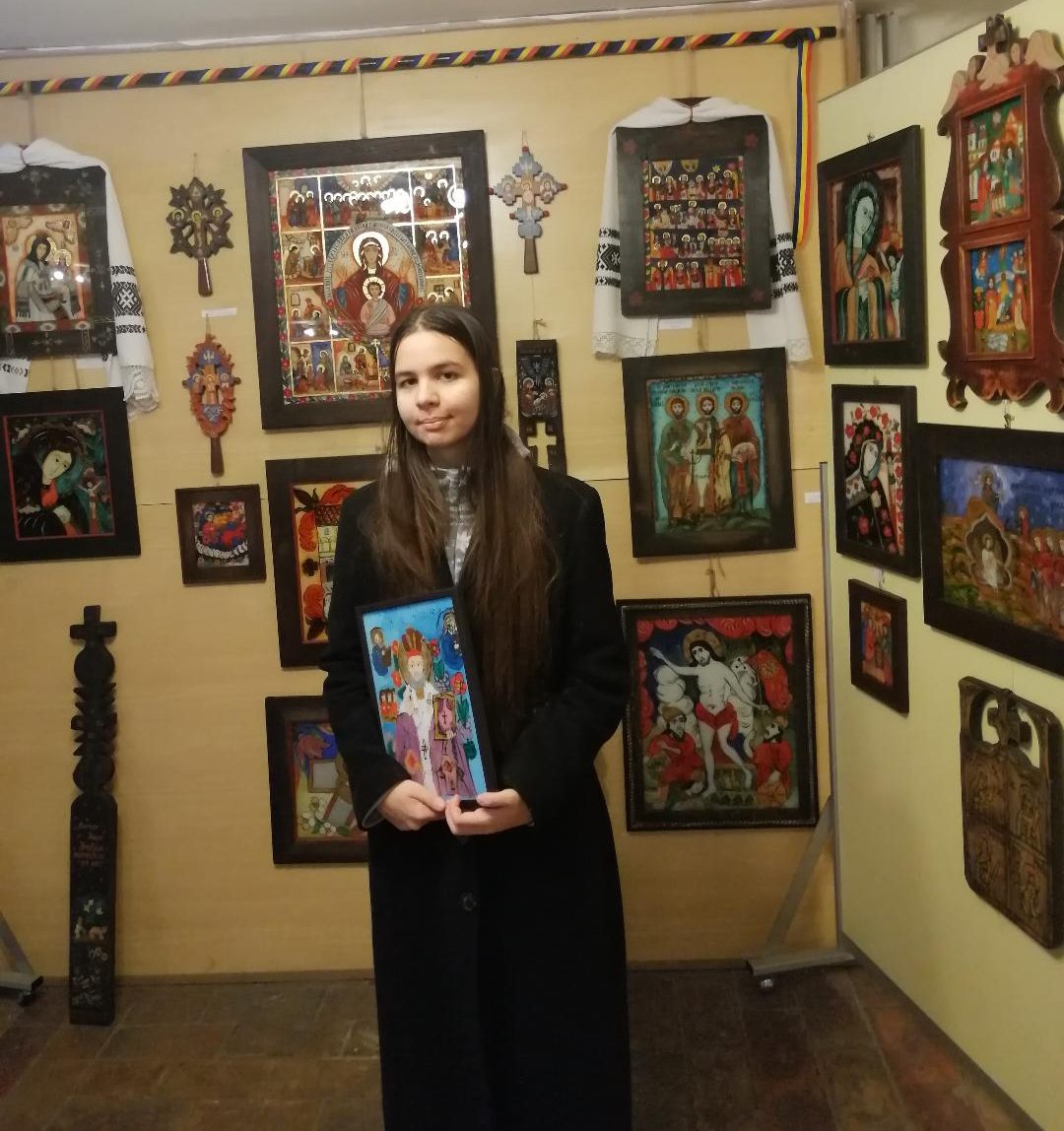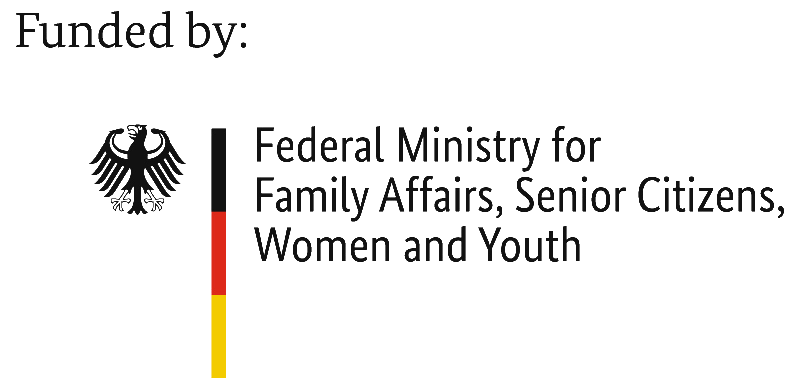Description
The art of glass icons is a centuries old Romanian Orthodox tradition, with
its early origins in the central part of the country.
A glass icon is made after a special model (izvod(sg), izvoade(plural))-
which is a drawing, by pencil or by ink, of an old icon. There are many
collections of such models, which can differ from place to place.
The model is placed under a piece glass (which would be the future icon),
and the painter will paint with black ink the traces of the model directly on
the glass. After the model has been copied, the icon is painted in colours, and
then gold leaf is placed on the halo around the heads of the saints, and,
depending on the icon, on their clothes as well. The names of the saints are
written in the archaic Romanian alphabet.
After the icon has been finished, it is put in a frame. But the work is not
ready until the icon has been blessed and hallowed by a priest.
A few years ago, as a reward for my results at the Orthodox Religion
Olympiad, I was invited to a camp for Glass Icon Painting at a Monastery in the
region. I stayed there for three days and have been taught every day new skills,
which I can use in icon painting. I have chosen the model of Saint
Nicholas the Archbishop of Myra, and, by the end of the camp, I finished the
icon. It was a wonderful experience, and I consider glass icon painting a very
beautiful tradition.
Intention
Painting glass icons is an old tradition, which could be made by everyone. The instructions for painting such an icon are clear, and the result – the final icon, is beautiful. It does not take a lot of time or materials for it to be made and the process of making the icon from the beginning until the end lasts for about one day. This way, the younger generations get the opportunity to get a taste an amazing tradition, which is rooted in the ancient Orthodox Christian Tradition – which kept the Orthodox people from all countries united.
Descriere
Arta icoanelor pe sticlă este o tradiție ortodoxă română de secole, cu originile sale timpurii în partea centrală a țării.
O icoană pe sticlă este făcută după un anumit model ( un izvod, mai multe izvoade)- care este un desen, cu creionul sau cu cerneala, al unei icoane mai vechi. Sunt multe colecții ale unor asemenea modele, care se pot deosebi de la o regiune la alta.
Apoi, modelul este așezat dedesubtul unei bucăți de sticlă ( care va să fie viitoarea icoană), iar pictorul va picta cu cerneală neagră, urmele modelului, direct pe sticlă. După ce modelul va să fie copiat, icoana va fi pictată în culori, iar apoi, se va pune foiță de aur în aura din jurul capetelor Sfinților, și, depinzând de icoană, și pe hainele lor. Numele Sfinților sunt scrise în Alfabetul Românesc Vechi.
După ce se va termina de pictat icoana, ea va fi întoarsă pe cealaltă parte (nu cea cu acuarelele), și va fi pusă într-o ramă. Dar treaba nu este terminată până ce nu va veni un preot, care va sfinți icoana.
Acum câțiva ani, ca și recompensă pentru rezultatele mele la Olimpiada de Religie Ortodoxă, am fost invitată la o tabără de pictat de icoane pe sticlă la o Mănăstire din zonă. Am stat acolo vreme de trei zile, timp în care am fost învățată în fiecare zi noi metode pe care le pot folosi în pictatul icoanelor pe sticlă.
Am ales modelul Sfântului Ierarh Nicolae, iar, la sfârșitul taberei, am terminat icoana. A fost o experiență minunată, și consider pictatul de icoane pe sticlă o tradiție minunată.
Intenție
Pictatul de icoane pe sticlă este o tradiție veche, ce poate fi făcută de către oricine. Instrucțiuniile pentru a picta o asemenea icoană sunt clare, iar rezultatul – icoana, este foarte frumos. Procedeul de facere a icoanei, de la început la sfârșit, tine vreme de o zi, așadar nu este nevoie de prea mult timp sau material pentru a o face.
Astfel, tânăra generație ar avea oportunitatea de a gusta o tradiție uimitoare, ce își are rădăcinile în străvechea Tradiție Creștin-Ortodoxă – care i-a ținut pe ortodocșii din fiecare țară, uniți.
Beschreibung
Die Kunst der Glasikonen ist eine jahrhundertealte rumänisch-orthodoxe Tradition, die ihre Anfänge im zentralen Teil des Landes hat.
Eine Glasikone wird nach einem speziellen Modell (izvod(sg), izvoade(plural)) – einer Zeichnung einer alten Ikone mit Bleistift oder Tusche – hergestellt. Es gibt viele Sammlungen solcher Modelle, die sich von Ort zu Ort unterscheiden können.
Das Modell wird unter ein Glas gelegt (das die künftige Ikone sein wird), und der Maler malt mit schwarzer Tinte die Spuren des Modells direkt auf das Glas. Nach dem Kopieren des Modells wird die Ikone farbig bemalt, und dann wird Blattgold auf den Heiligenschein um die Köpfe der Heiligen und, je nach Ikone, auch auf ihre Kleider aufgetragen. Die Namen der Heiligen werden in dem archaischen rumänischen Alphabet geschrieben.
Nachdem die Ikone fertiggestellt ist, wird sie in einen Rahmen gesetzt. Das Werk ist jedoch erst dann fertig, wenn die Ikone von einem Priester gesegnet und geweiht wurde.
Vor ein paar Jahren wurde ich als Belohnung für meine Ergebnisse bei der orthodoxen Religionsolympiade zu einem Lager für Glasmalerei in einem Kloster in der Region eingeladen. Ich blieb dort drei Tage lang und lernte jeden Tag neue Fertigkeiten, die ich in der Ikonenmalerei anwenden kann. Ich wählte das Modell des Heiligen Nikolaus, des Erzbischofs von Myra, und am Ende des Camps war die Ikone fertig. Es war eine wunderbare Erfahrung, und ich halte die Ikonenmalerei aus Glas für eine sehr schöne Tradition.
Absicht
Das Malen von Ikonen aus Glas ist eine alte Tradition, die von jedem durchgeführt werden kann. Die Anleitung zum Malen einer solchen Ikone ist einfach und das Ergebnis – die fertige Ikone – ist wunderschön. Die Herstellung einer solchen Ikone erfordert weder viel Zeit noch viel Material, und die Herstellung der Ikone dauert vom Anfang bis zum Ende etwa einen Tag. Auf diese Weise erhalten die jüngeren Generationen die Gelegenheit, eine erstaunliche Tradition kennenzulernen, die in der alten orthodoxen christlichen Tradition verwurzelt ist und die orthodoxen Menschen aus allen Ländern vereint hat.


